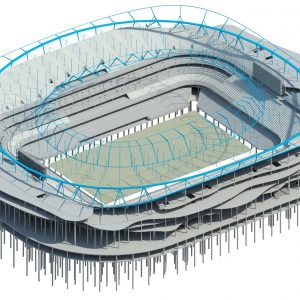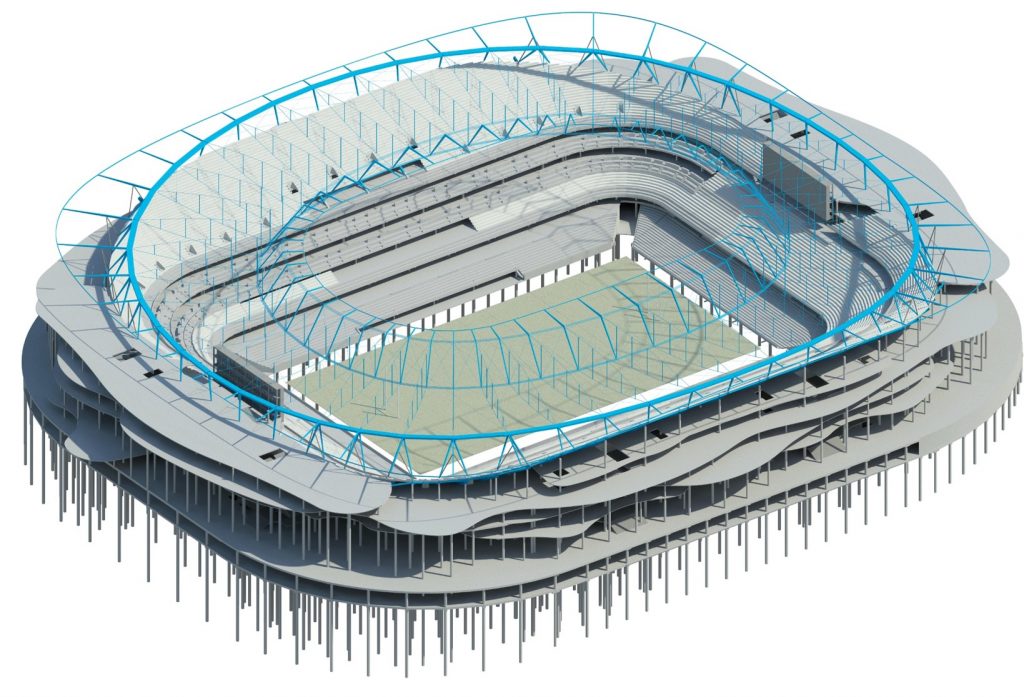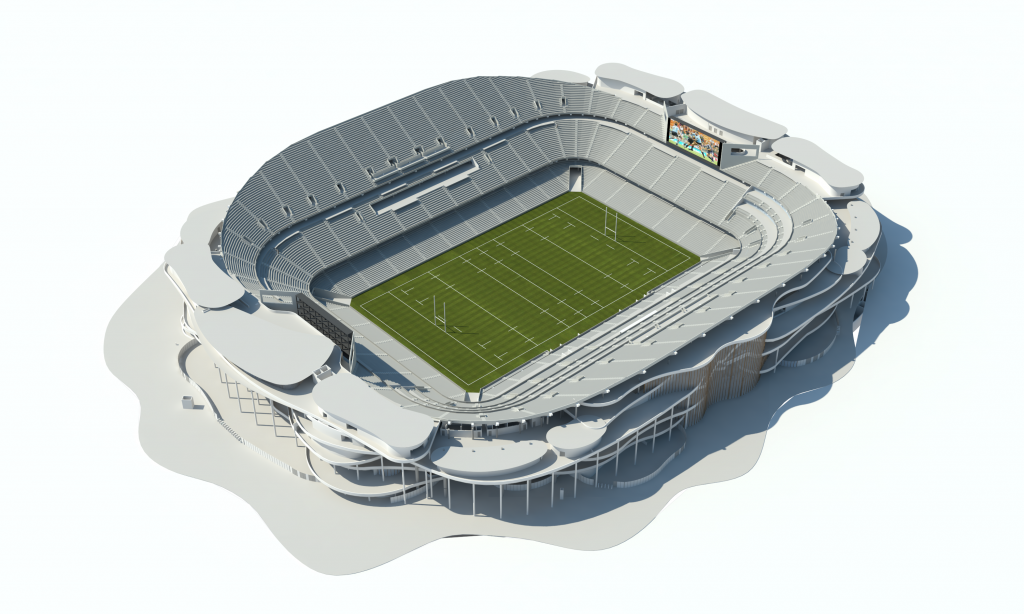
The structural engineers at Arup in Australia take on some of the country’s most challenging projects. So it’s no surprise that they paired with the architects at Populous to design the structure for the proposed, 60,000‑seat National Football Stadium in Sydney. That’s because the architects’ initial designs featured curving organic forms and plans for Australia’s first cable net roof for a major stadium. The Arup team was tasked with bringing innovative and cost-effective structural ideas to the project’s concept phase—and they had just 12 weeks to collaborate with the architects and deliver.
The Arup team realized that they needed a way to both quickly explore the best structural options for the project and to increase documentation efficiency. A computational design tool was the ideal solution. They chose to work with Autodesk Revit software, their core documentation application, and Dynamo software. Autodesk Revit with Dynamo powered the project forward, letting the team advance the concept twice as quickly as compared to traditional methods. And now it’s transforming the way that Arup delivers other projects.
“We used Dynamo to rationalize and apply a logic to a complex structure. The powerful part of Dynamo is how it let us develop and improve on concepts quickly. Because of the pace it brought to our workflow, we did 12 iterations instead of 3 or 4.”
— XAVIER NUTTALL Structural Engineer, Arup
12 concepts in 12 weeks
With only 12 weeks for the documentation of the concept design, Arup needed to get started right away with Dynamo—there was no time for a steep learning curve. The documentation lead on the project had little scripting experience in Dynamo, but she was able to quickly create master scripts thanks to the intuitive nature of the process. These scripts let the engineers explore and document multiple structural options that suited the ever-evolving architectural forms. The scripts automated much of the tedious work behind efficiently modeling and documenting the geometrically complex stadium. During the early stages of concept design, Dynamo let the Arup and Populous teams quickly and efficiently collaborate, resulting in an iconic, well-coordinated, and optimized stadium design. This was particularly advantageous in helping to de-risk the complexity of the design while also informing costing and feasibility.
Interoperability between Dynamo software, Revit software, and Arup’s preferred structural analysis tool helped the team to rapidly create design iterations. They shared their ideas with the architects and collaborated in a 3D Revit environment to enhance the overall design. In all, the team developed 12 concepts, each of which advanced and improved on the preceding one. Absent Dynamo, the team estimates that they would have only had time to develop and document 4 structural concepts. Dynamo automated many of the tedious tasks in the documentation process, saving more than 5 weeks on documentation, which allowed the team to devote more effort than expected to coordinating and optimizing their designs.

The bold, curving shapes featured in the design for the proposed National Football Stadium in Sydney, Australia required innovative structural support. Images courtesy of Populous.
More design, fewer boring tasks
Success on the stadium project inspired Arup to apply the conceptual design and automation ability of Dynamo to more projects. The firm began teaching its documentation specialists throughout Australia how to create their own scripts. Arup also started a script library to share timesaving scripts, allowing the Arup documentation team to spend less time on tedious tasks, and more time on design optimization for their everyday projects.
“Tedious documentation tasks that would have taken 4 hours only took 10 minutes using Dynamo. The savings we realized gave us more time to finesse better design solutions.”
— SHAWNEE FINLAYSON, Structural Technician, Arup
ABOUT ARUP
Founded in 1946, Arup is one of world’s largest engineering firms, with as many as 10,000 projects in progress at any time. The firm came to Australia in 1963 to work on the landmark Sydney Opera House. Today, Arup operates 7 offices in Australia. Recent projects include the new Perth Stadium, Adelaide Oval Redevelopment, Barangaroo, and 8 Chifley, which is one of Australia’s greenest buildings.
ABOUT POPULOUS
Populous designs places where people love to be together, like Yankee Stadium and the London Olympic Stadium. A global architecture firm, Populous has designed more than 2,000 projects worth $40 billion across emerging and established markets. The firm has 17 offices on 4 continents.
The post Arup uses Dynamo to advance the pace of collaboration on the proposed National Football Stadium in Sydney appeared first on BIM and Beam.
from my Autodesk source Bim & Beam: BIM and Beam at http://blogs.autodesk.com/bim-and-beam/2017/06/26/arup-national-football-stadium-in-sydney/
via IFTTT


No comments:
Post a Comment